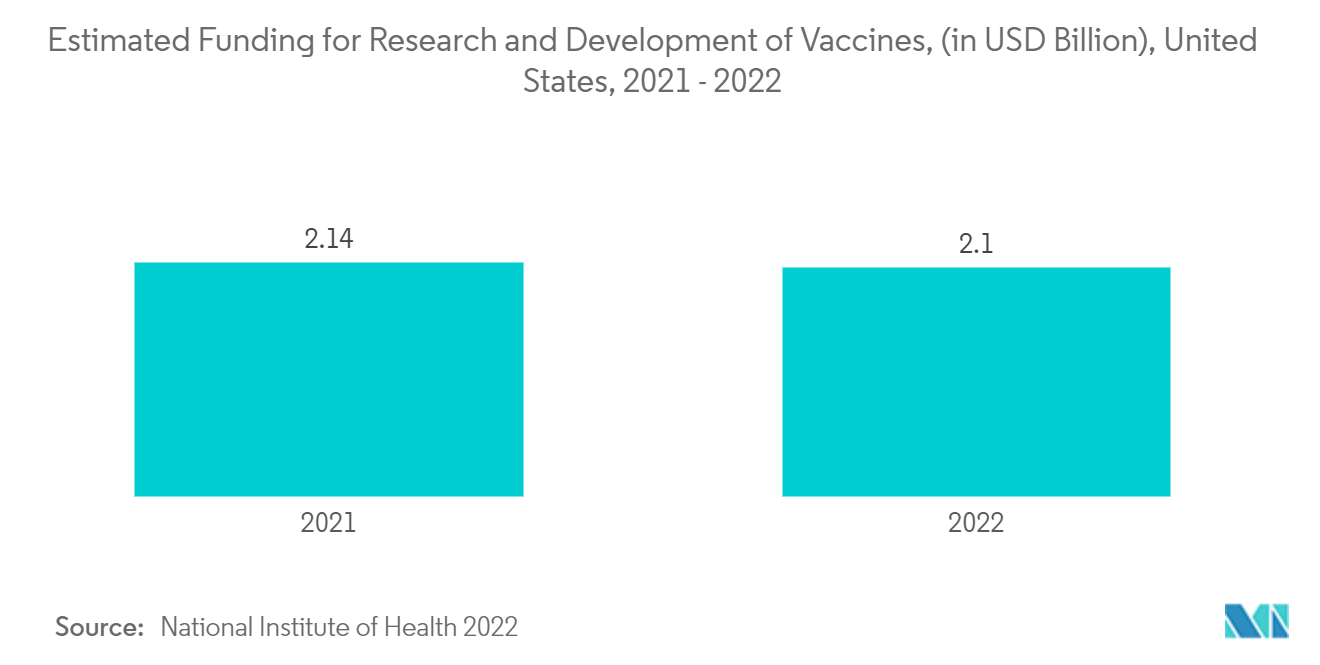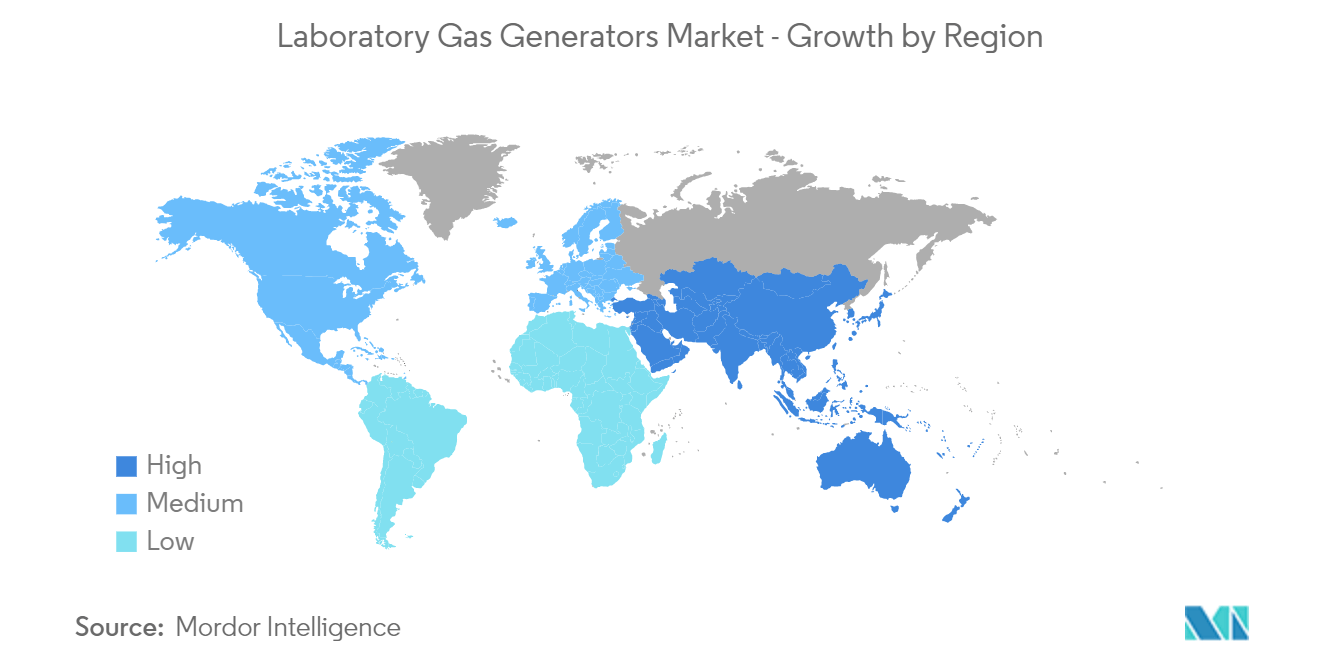Market Trends of Laboratory Gas Generators Industry
This section covers the major market trends shaping the Laboratory Gas Generators Market according to our research experts:
Nitrogen Gas Generators is Expected to Hold Significant Share in the Market Over the Forecast Period
Nitrogen gas generator is expected to contribute to the growth of the studied segment over the forecast period. Nitrogen gas generators are machines that separate nitrogen molecules from compressed air. It is widely adopted in the food industry, semiconductors, petroleum, chemistry, and research institutes. Factors such as the growing importance of analytical techniques in drug and food approval processes, rising food safety concerns, and increasing R&D spending in target industries are driving segment growth. Additionally, advantages such as low reactivity with other compounds and the ability to control ambient oxygen levels are increasing the adoption of nitrogen gas generators in carrying out liquid chromatography-mass spectrometry (LC-MS) analysis to operating evaporative light scattering detectors (ELSDs) and maintaining environmental conditions in Vitro Fertilization (IVF) incubators.
Conventional nitrogen cylinders are associated with several downsides, such as a higher risk of leaks. For instance, an NPR study article published in January 2021 demonstrated how dangerous nitrogen leaks had killed six people and caused 11 hospitalizations in the Northeast Georgia poultry plant. The report also mentions that storing vast amounts of pressurized, highly flammable nitrogen in laboratories increases the risk of fire and explosions. Hence there is an increase in demand for advanced nitrogen gas generators as it mitigates these risks. These nitrogen gas generators are compact, consistent, cost-effective, and easy to operate. Thus, such advancements boost the demand for nitrogen gas generators.
Moreover, companies are also involved in marketing strategies such as acquisitions, mergers, and product launches. For instance, in September 2021, another company Nikkiso Cryogenic Industries' Clean Energy & Industrial Gases Group, reported that Nikkiso Cosmodyne recently commissioned its TGNO-1000 gaseous oxygen and nitrogen plant. TGNO is a cryogenic oxygen and nitrogen generator designed to produce three gaseous product streams, which are medium and high-pressure nitrogen and oxygen gas.
Additionally, in July 2021, Scientific Laboratory Supplies launched a line of SLS lab pro gas and liquid nitrogen generators, available exclusively in the UK and Ireland. This technology gives laboratories control over their gas supplies and promotes sustainability by eliminating the need for cross-country transportation of gas canisters.
Likewise, the rising research and expenditure for developing various biologics or pharmaceutical products are also expected to reflect positively on the growing demand for nitrogen gas generators.
Thus, due to the growing preference for nitrogen gas performance over conventional nitrogen cylinders and innovative product launches, the overall market for nitrogen gas generators will grow steadily over the forecast period of the study.

North America is Expected to Hold Significant Share in the Laboratory Gas Generators Market Over the Forecast Period
North America is expected to hold a significant market share, owing to the rise in research and development activities among numerous pharmaceutical and other industries in the region. The major factors driving the growth of the laboratory gas generators market in the North American region include the well-established infrastructure and increased R&D spending for the pharmaceutical industry.
The high expenditure on research and development (R&D) by various pharmaceutical companies and government organizations has been increasing recently in the US, anticipated to drive market growth over the forecast period. For instance, per the 2021 annual reports of Novartis AG, one of the global pharmaceutical companies, invested USD 14,886 million in 2021 for R&D, which increased from USD 14,197 million in 2020. In addition, another major pharmaceutical manufacturer, Pfizer Inc., invested USD 13,829 million in 2021 on R&D, which increased heavily compared to USD 9,393 in 2020, as mentioned in the 2021 annual report of the company. Thus, the increased research and development expenses in the pharmaceutical industry are expected to reflect positively on the demand for laboratory gas generators. They play a crucial role in drug production and down-streaming processes, thereby contributing to the market's growth in this region.
Additionally, in June 2021, Sanofi launched the mRNA Center of Excellence and invested over USD 410.14 million to accelerate developing and delivering next-generation vaccines in the US. Establishing manufacturing facilities to produce advanced vaccines will likely create opportunities for using laboratory gas generators in the pharmaceutical and biopharmaceutical industry segment. Thus, it is expected to drive market growth in the region.
Research organizations and universities are taking initiatives to develop new technologies, which are expected to contribute to the market growth in the country during the forecast period. For instance, in February 2022, the Massachusetts Institute of Technology (MIT) Lincoln Laboratory demonstrated a portable hydrogen fuel generator, a prototype device to convert aluminum into hydrogen fuel. The device is called the Hydrogen Tactical Refueling Point (H-TaRP). It comprises an aluminum dispenser, reactor vessel, water cooling system, and a control system manifold to fill a hydrogen tank.
Therefore, the factors such as rising research and development expenditure, quick adoption of advanced new technologies, and significant market players in this region are expected to contribute to the market's growth in North America during the forecast period.


